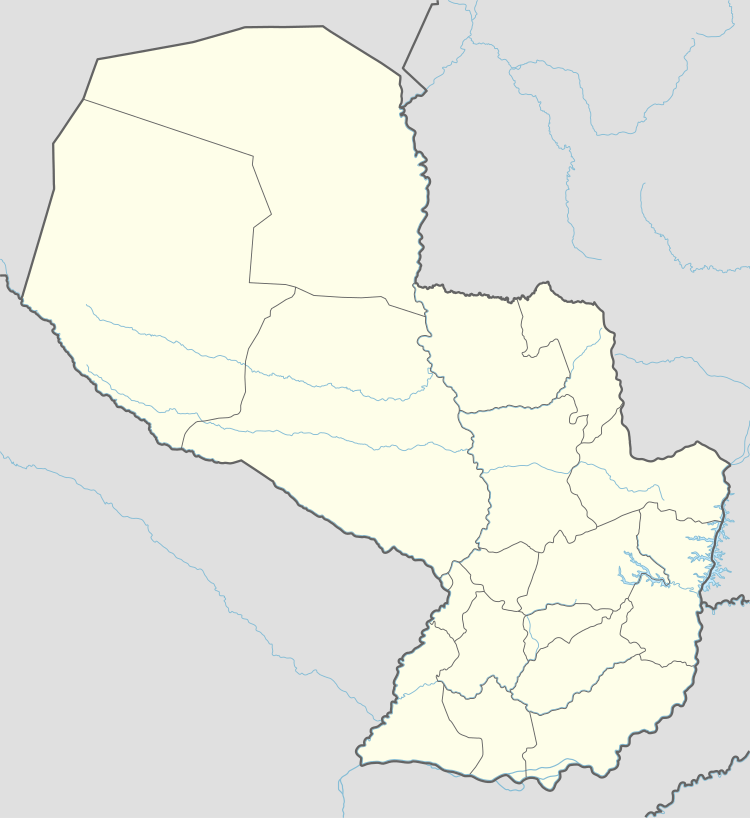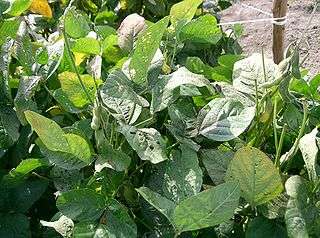Santiago, Paraguay
| Santiago | |
|---|---|
| City | |
| Santiago | |
|
Iglesia de Santiago | |
 Santiago | |
| Coordinates: 27°9′0″S 56°47′0″W / 27.15000°S 56.78333°WCoordinates: 27°9′0″S 56°47′0″W / 27.15000°S 56.78333°W | |
| Country | Paraguay |
| Department | Misiones |
| Re-founded | 1669 |
| Government | |
| • Intendente Municipal |
Américo Romero Sanabria (Liberal Party) |
| Area | |
| • Total | 740 km2 (290 sq mi) |
| Elevation | 69 m (226 ft) |
| Population (2008) | |
| • Total | 7,702 |
| • Density | 9/km2 (20/sq mi) |
| Time zone | -4 Gmt |
| Code Postal | 4860 |
| Area code(s) | (595) (782) |
Santiago is a city of Paraguay, located in the Misiones Department. It is one of the most important Jesuit missions.
Toponymy
Santiago was founded as “San Ignacio de Caaguzú”, near the Apa River, it was re-founded in the Misiones department, Paraguay, in 1669 with the name of “Santiago Apóstol”.
History
“Santiago” or “Santiado de las Misiones” was founded originally in the banks on the Apa River with the name “San Ignacio de Caaguazú”. Later was re-founded in 1669 in the place where is today with the name of “Santiago Apóstol”.
It is an old Jesuit Mission and still today preserves many characteristics of the colonial time, like its great main square, the “house of the Indians” and a museum that preserves objects of art from colonial times.
During colonial times Santiago was a very important city because of its population, about 3,000 inhabitants.
It is important to mention that during the holidays it was organized the Opera of Santiago.
Geography
It is located 278 kilometers from Asunción, capital of the country. It is located on a hill, between Ayolas and San Patricio.
Climate
In summer, the temperature reaches 39°C, in winter drops to 0°C. The annual average is 21°C.
Population
Santiago has a population of 7,702 inhabitants, 4,017 men and 3,685 women, according to the General Direction of Polls, Statistics and Census.
Economy
The people of Santiago dedicate mostly to cattle. Also to the agriculture and sow corn, sugar cane, cotton and soy.
Municipality
It was re-founded in 1669 where is located today with the name of “Santiago Apóstol”. The current governor is Américo Romero Sanabria (Liberal Party).
Tourism

It has an interesting museum of sacred art, the “Museo Jesuítico de Santiago” (Jesuit Museum of Santiago).
The church preserves many images carved in wood by the natives. The “House of the Indians” is also a museum that exhibits images of saints. The church has a unique altarpiece in the Missions; there are also many pictures of biblical themes.
The Benedictine monastery “Tupasy María” is a beautiful place of meditation, it was founded in 1984.
The inhabitants of this city preserve the old traditions and in January it is celebrated the “Fiesta Tradicional Misionera” (Missioner Traditional Festivity), when artists and horse breaker from Paraguay, Argentina, Brazil and Uruguay, show their abilities in breaking-in and horseracing. In this event traditional Paraguayan food is always present, some of the dishes are mbejú and chipa. This festivity usually attracts many tourists.
The State “Tacuatí” is place for the Festival of Breaking-in and Folklore, located 270 kilometers from Asunción, to the south, in the road to Ayolas.
The Tambo Curupay is an inn where people can stay in their visit to the city, practice sports and take strolls in the country.
References
- Geografía Ilustrada del Paraguay, Distribuidora Arami SRL; 2007. ISBN 99925-68-04-6
- Geografía del Paraguay, Primera Edición 1999, Editorial Hispana Paraguay SRL
External links
- Secretaria Nacional de Turismo
- ABC Digital "Así es Nuestro País" MISIONES (VIII Departamento)
- Turismo en Misiones